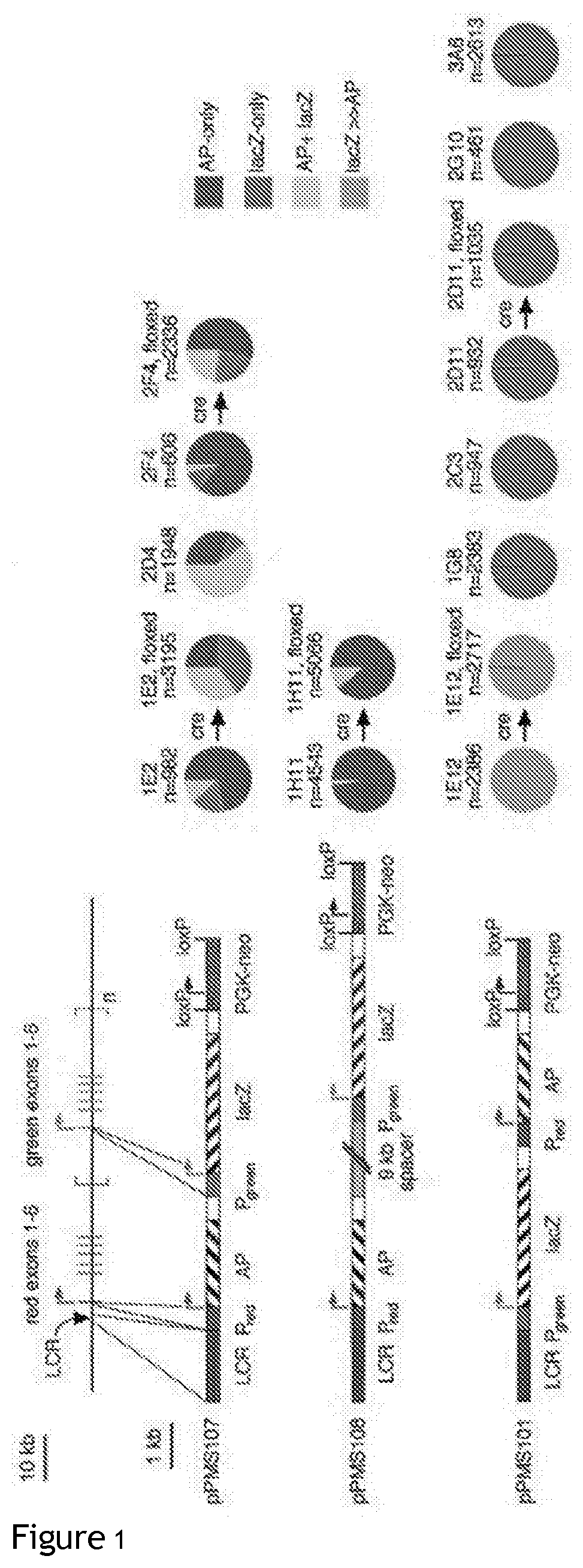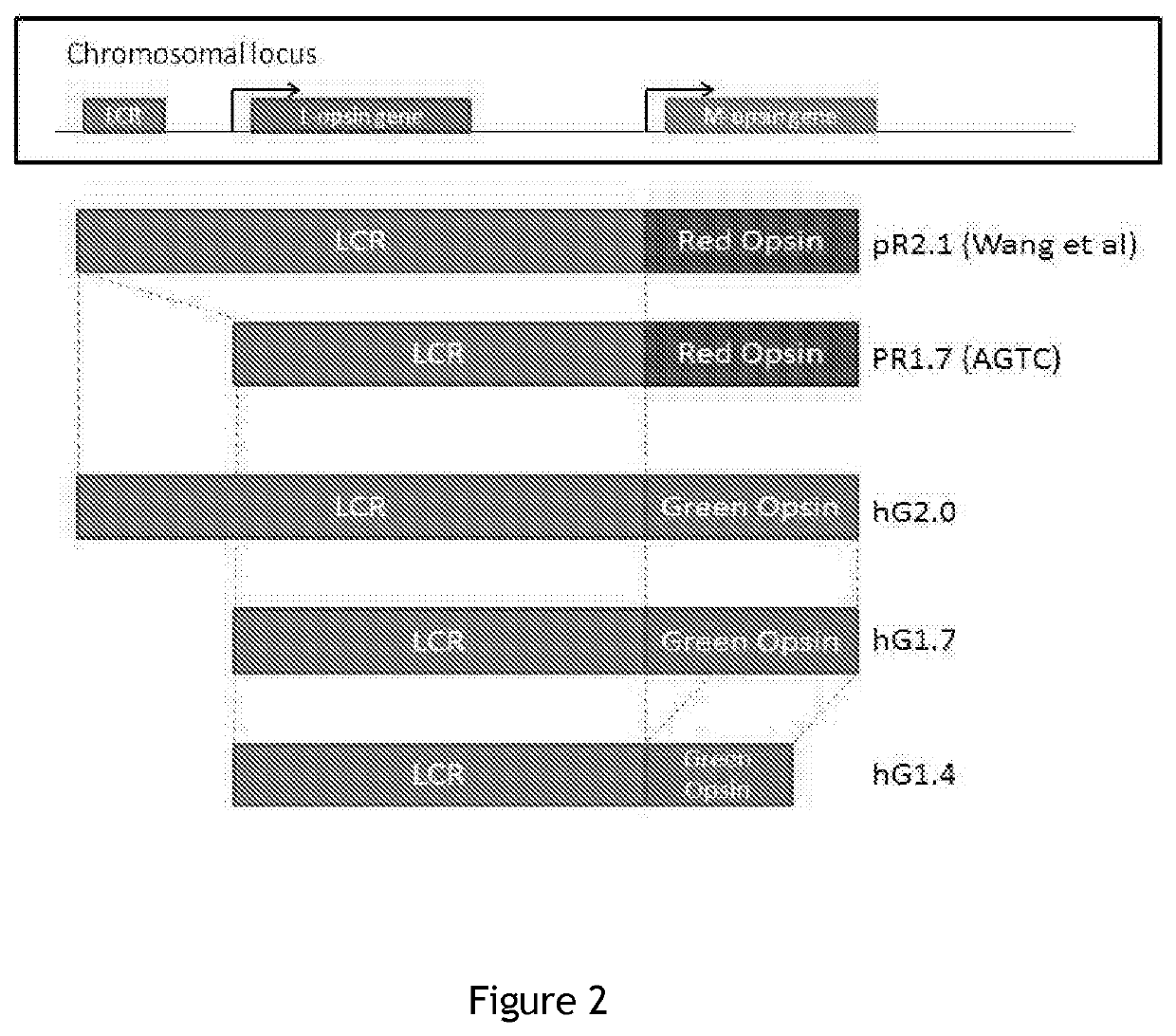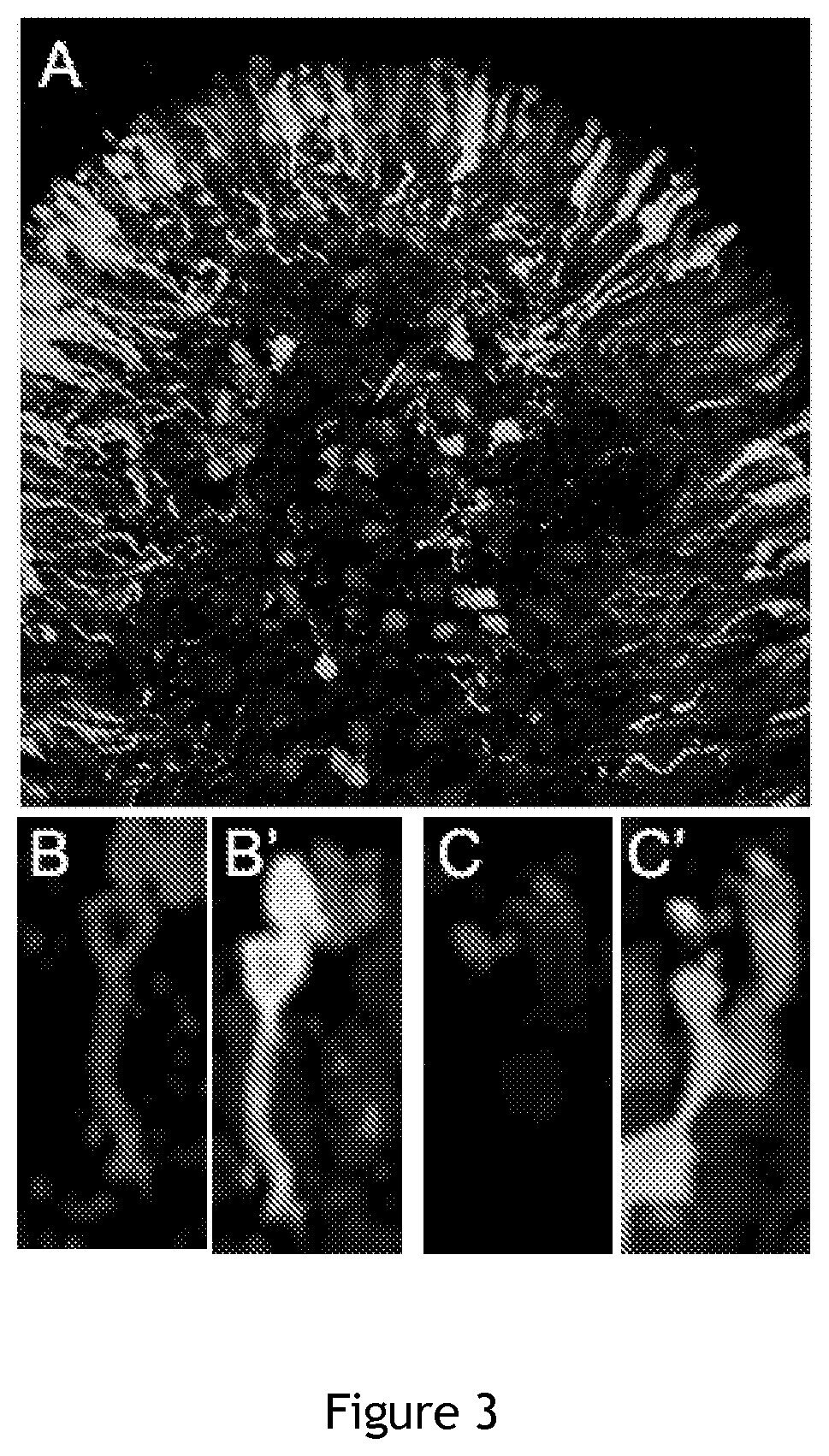Compositions and Methods for Treating Retinal Disorders
a technology for retinal disorders and compositions, applied in the field of retinal disorders treatment and/or prevention, can solve the problems of visual handicap, vision loss, and inability to recognize abnormal vision of patients, and achieve the effect of increasing the treatment effect of vectors
- Summary
- Abstract
- Description
- Claims
- Application Information
AI Technical Summary
Benefits of technology
Problems solved by technology
Method used
Image
Examples
example 1
ion a Cone-Specific Transcriptional Control Unit (TCU)
[0187]The human Locus Control Region (LCR), which is situated upstream of the red opsin gene, enhances expression of both the red opsin (L-opsin) and green opsin (M-opsin) genes, which are located in tandem (see FIG. 1, top left). Powerful cone-specific promoters have previously utilised the LCR and red opsin promoter, as they are physically adjacent elements. In an in vivo reporter gene expression study in transgenic mice by Smallwood et al, the different levels of expression from either the red or green opsin promoter based on their physical proximity to the LCR were examined. Smallwood et al. constructed several derivatives of the human red and green array to demonstrate different levels of expression from either the red or green opsin promoter based on their physical proximity to the LCR (see FIG. 1, lower left). Each derivative consisted of an alkaline phosphatase (AP) reporter gene under control of the red opsin promoter an...
example 2
zed TCU Provides Robust Expression of a Reporter Gene in All Cone Subtypes
[0191]To test the ability of the optimized TCUs disclosed herein to promote reporter protein expression in cone cells, human ES-derived retinas were transduced using AAVshh10-hG1.4.GFP, Robust reporter gene expression (FIG. 3A) in all cone subtypes (FIG. 3B′, C′) was observed.
[0192]Compared with a previously characterised human cone arrestin (CAR) promoter, the expression levels provided by hG1.4 were higher in human cones and there was no ectopic expression in rod or retinal pigment epithelium (RPE) cells. In mice, cone promoters based on human red opsin promoters were not cone-specific and mediated expression in rods as well (Ye et al., 2016).
example 3
l Optimization of the TCUs and Codon Optimisation of the Human CNGA3 Gene
[0193]Changing the GGGCCG sequence in positions +5 to +10 relative to the transcription start site of the green opsin gene to TCTAGA, doubles the resultant expression level. This sequence alteration (M8), see SEQ ID NO:16, was therefore incorporated into the hG1.4 and hG1.7 constructs
[0194]In addition, the coding sequence of CNGA3 was subjected to codon-optimisation, to attempt to improve the codon usage bias and CG content, and remove any cryptic processing sites and potential stem-loop structures in the mRNA.
[0195]The hG1.4(M8) (SEQ ID NO:6) and hG1.7(M8) (SEQ ID NO:15) constructs were used in AAV2 / 8 vectors carrying a human codon optimised CNGA3 cDNA (coCNGA3) and the vectors' efficacy was determined in a CNGA3 knockout mouse model using electroretinographic (ERG) assessments of cone function. One month post vector administration, there was no clear advantage over vector without the M8 sequence, although the...
PUM
| Property | Measurement | Unit |
|---|---|---|
| volume | aaaaa | aaaaa |
| pH | aaaaa | aaaaa |
| length | aaaaa | aaaaa |
Abstract
Description
Claims
Application Information
 Login to View More
Login to View More - R&D
- Intellectual Property
- Life Sciences
- Materials
- Tech Scout
- Unparalleled Data Quality
- Higher Quality Content
- 60% Fewer Hallucinations
Browse by: Latest US Patents, China's latest patents, Technical Efficacy Thesaurus, Application Domain, Technology Topic, Popular Technical Reports.
© 2025 PatSnap. All rights reserved.Legal|Privacy policy|Modern Slavery Act Transparency Statement|Sitemap|About US| Contact US: help@patsnap.com



